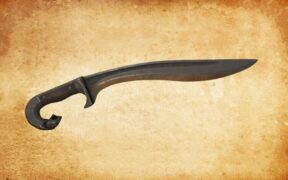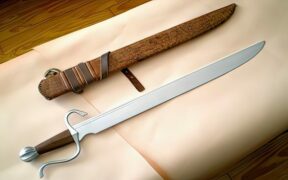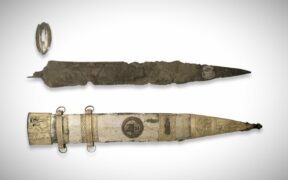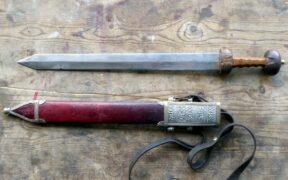Our content features commercial links to our products, committed to transparent, unbiased, and informed editorial recommendations. Learn More
What is a Falx? Introduction to the Roman Weapon
NO AI USED This Article has been written and edited by our team with no help of the AI
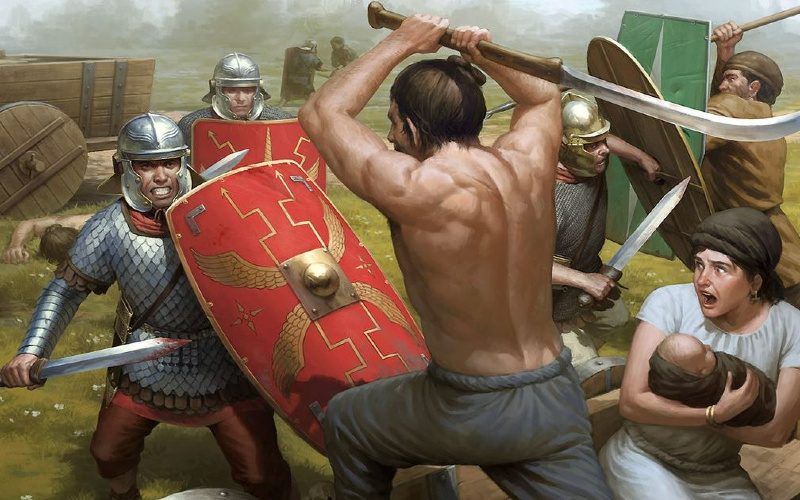
The success of the Roman army was their organization, discipline, rigid training, and their arsenal of weapons and armor. However, there was one weakness to their armor and the shields that they used, known as the Falx Sword.
The Falx Sword is a one or two-handed weapon with a sickle-like single-edged blade made for very powerful slashing attacks by the ancient Dacians and Thracians. In this article, we will discuss its types, characteristics, history, and how it caused the Romans to change their armor.
Types of Falx Sword
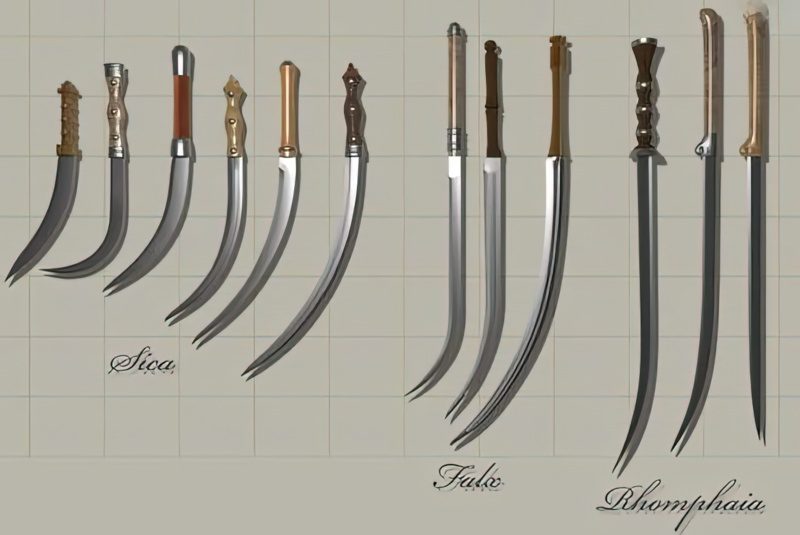
Falx was a Roman or Latin term that means sickle, and in sources, it could sometimes be used to refer to the Falx sword, Sica, Rhomphaia, or any type of instrument resembling a sickle. It was also used to describe the Roman grappling hook that was used to take down buildings. Despite that, the Falx sword has its own unique look and is generally grouped into two types.
One Handed
The one-handed Falx sword is smaller than the two-handed and is often confused with the Sica, but they are different weapons. It has a handle that offers a very stable grip and a blade that starts to curve naturally between the middle of the guard and the mid-point.
Two-Handed
Falx swords are usually placed in the group of two-handed weapons since it is most commonly used by Dacian warriors holding it with two hands. The two-handed type of Falx has a straight blade and then starts to curve at the midpoint and forms a sickle-like end at the blade’s tip. This type of Falx is usually confused with the Rhomphaia of the Thracians.
A version of the two-handed Dacian Falx is also made with a very large handle but a shorter blade. These types were heavily used by under-armored rushing Dacian warriors that could pierce and cut through the unprepared Romans with multiple strikes at once.
Characteristics of the Falx Sword
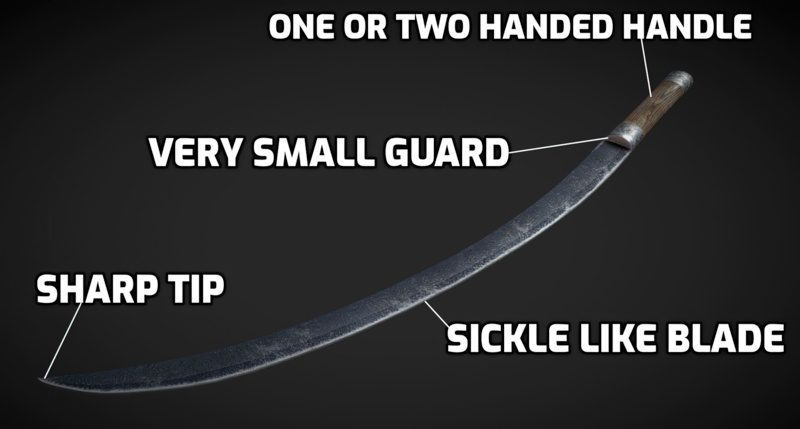
The ancient Falx sword’s strongest and most visual characteristic is the scythe or sickle-like element throughout its blade length. It has a very curved blade, and unlike the Japanese Katana, which is sharpened on the outer edge, the Falx is usually razor-sharp on the inner part of the blade.
Blade
The blade of the one- or two-handed Falx is curved, has a sickle-like shape, and is made of iron or steel. It doesn’t start to radically curve from one point like the Sica. Instead, it starts somewhere from the midpoint and between the guard. This curve gradually gets stronger as it reaches the blade’s sharp tip, which renders it a slashing and thrusting weapon.
Some versions of the Falx are much larger and resemble a polearm. These are strictly used as two-handed weapons, and their curve starts in the middle of the blade, allowing it to strike the Roman legionary’s shield.
Because there are different types of lengths for the Falx, the blade length could also vary but is generally in the range of 15 to 43 inches (40 to 110 cm).
Guard
The Falx sword has a very small circular or round guard, and in some cases is without one completely. The Adamclisi Monument, in Romania, commemorating Roman Emperor Trajan’s victory over the Dacians, has a very small guard that sticks out on only one end of the handle.
These types of guards on the Falx aren’t made for the protection of incoming attacks but for providing a stopping point for the hands during offensive moves.
Handle
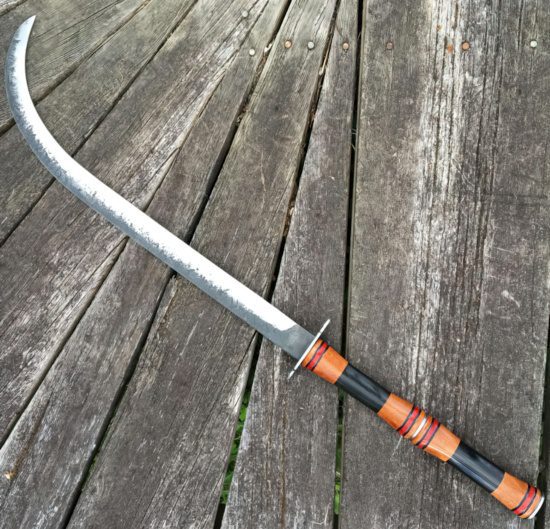
The Falx sword has a very distinct type of handle. It can be either shorter and used primarily with one hand and a shield or much longer to be strongly grasped with two hands. There are instances of smaller Falx blades with the same length as their handles. The most commonly used material in manufacturing the weapon was wood, horn, and bone.
The length of the handle of the Falx sword is between 8 and 15 inches (20 to 40 cm). If it is a larger handle, it will feature a two-handed ridge in the middle of it for a better grasp of each hand.
Weight
Considering this weapon was feared by the Roman Empire for its ability to cut through their shields and helmets, it is fairly light in weight. The most common weight of the Falx sword is 1.7 to 4.4 lbs (0.8 to 2 kg)
Length & Size
The Falx sword is generally seen as a large weapon used to cut through Roman shields and armor, but it could be found in smaller designs. The most common length for the sword is between 20 to 51 inches (50 to 130 cm).
Uses for the Falx Sword
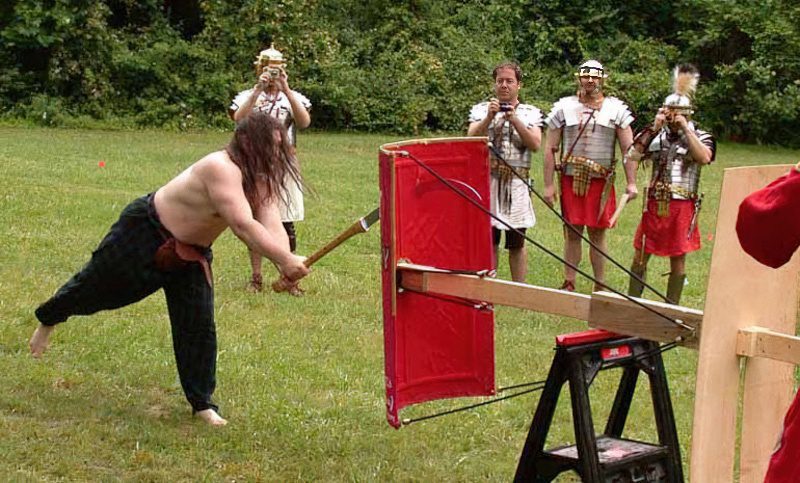
The Falx sword is a weapon that is primarily used with two hands to deliver slashing motions. However, the smaller versions allow it to be used with only one arm. But its trademark is the ability to deliver both vertical and horizontal blows, along with its sharp tip that delivers thrusts.
It is a very light weapon that offers fast strikes but isn’t well known for providing much defense. These attacking motions were used to take down enemy armor and shields, and were used in daily agriculture.
Warfare & Combat
The best-known use for the Falx Sword was for warfare and combat, but it was especially known for its deadly strikes that could decapitate the enemy with its scythe blade shape.
Roman soldiers would often be caught off guard by the under-armored and fast Dacian warriors, who would easily defeat them. The shape of the blade would enable it to get caught on the shield, but at the same time, the curved blade’s tip would easily pierce through the soldier hiding behind it.
The Falx sword was also used for taking out the opponent by delivering blows to the legs.
Shield & Armor Destroyer
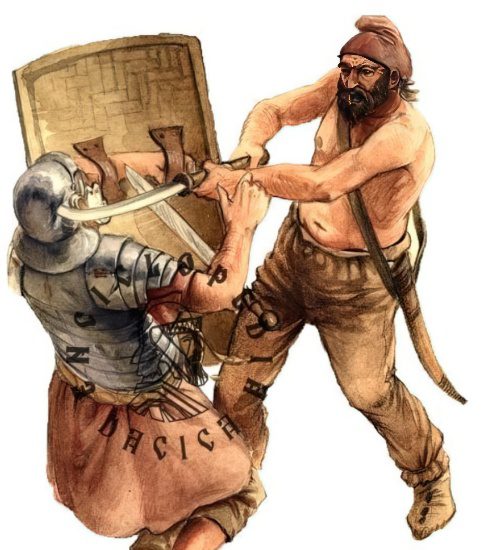
The many fatalities suffered by the Roman army led to the modification of their own weapons in hopes that they would offer better protection. Another big thing that was very terrifying is that the Falx sword was known to cut through the armor itself. A couple of precise strikes at the same time could easily crack armor in half, leading to the redesign of the Roman scutum shield.
Daily Activities
The Falx sword, along with many ancient sickle-like swords, were commonly used as everyday tools. It was used in farming and agriculture, bush clearing, and chopping trees for firewood. Today in Romania, a similar knife called Cosor is used by the nation’s farmers.
Modern
Today the Falx Sword is the main weapon used in almost every LARP (live-action roleplaying) event that depicts victorious Dacian Wars. It is a popular ancient sword, much like the Iberian Falcata, and can often be seen in modern media such as movies and video games.
This ancient sword makes a beautiful decoration piece, but owning a carbon steel Falx can prove very fun to try out on bottles or even wood for its powerful slashing capabilities.
History of the Falx Sword
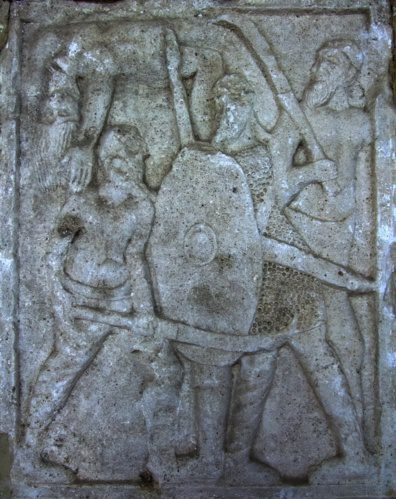
After many excavations in modern Romania and the Carpathian Mountains, archeologists realized how important the role of metallurgy was for the Dacians. These experienced blacksmiths made many deadly weapons and useful farming tools.
The use of metallurgy allowed for the creation of long scythes, which is therefore considered being a North Thracian (modern northeast Balkans) invention in these regions which with time rose to be the trademark Falx weapon of the Dacians.
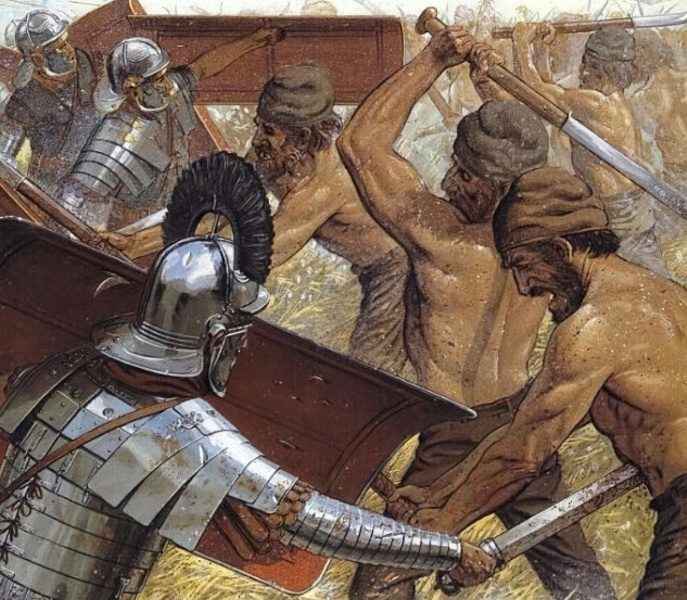
The Falx can be found in the sources of the Dacian wars, as well as coins and imperial monuments like Trajan’s column. The rarity of the various archeological sites can also be explained by the fact that they were substantial war loot or prize taken by Roman soldiers.
The origin of the Falx sword stems from daily agriculture, presumably in 2nd century Romania and some say it was influenced by the earlier Thracian Sica or Rhomphaia. It was also exported to many regions, such as Celtic, Sarmatian, and German regions.
It became one of the most successful weapons the Dacians utilized against the Romans because of its ability to shatter armor.
One reported modification to Roman armor due to an encounter with the falx was the new reinforced heavier Roman lobster tail helmet, with its cheek protection pads. The armor used to protect the arms was also added and used by gladiators to protect their hands. The scutum shield became more curved with metal edges, aiding soldiers in the Conquest of Dacia.
Conclusion
One of the most recognizable objects from antiquity is the renowned Falx sword, created by the brave Dacian warriors. As a strong weapon that temporarily weakened and crushed through the armor of Roman legionaries, owning one now should be on the wish list of any sword enthusiast.
